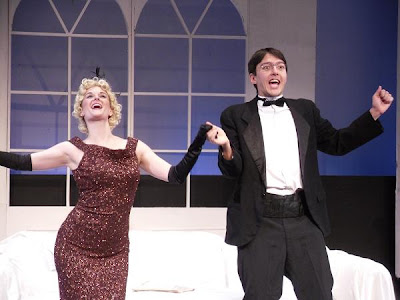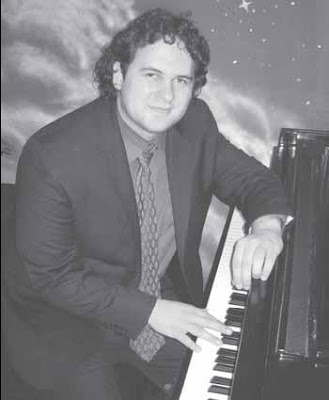 Image cadged from Wikipedia.
Image cadged from Wikipedia.I picked up this book at Barnes and Noble over the Thanksgiving holiday mostly out of curiosity about the history of the place I grew up: New Mexico. Frequently, we take our home's story for granted, and so sometimes it's good to re-examine one's roots. Kit Carson's name is appended to many things in New Mexico (like the Carson National Forest), and he made his home in Taos, but just who was he?
Kit Carson was an unusually-capable fur trapper and mountain man who displayed several traits unusual for the time (or, for that matter, any time). First, Kit Carson was extremely humble in demeanor, and had impressive diplomatic skills, aided by his skill in understanding Indian languages, plus Spanish. Second, he was ferocious in battle. Third, despite his warrior skills, he was extremely-cautious in the presence of danger, and rarely took unanticipated risks, which was doubly-important considering just how dangerous the Old West was. Fourth, he travelled all over the West before the area came under American domination and knew the vast area better than almost any American of the time did. Thus, Kit Carson was one of the very few Americans who had both the knowledge and skills to successfully-guide American expeditions into the wilderness, and in time, to conduct military operations there.
As Sides relates:
The special thing that Carson had couldn't be boiled down to any one skill; it was a panoply of talents. He was a fine hunter, an adroit horseman, an excellent shot. He was shrewd as a negotiator. He knew how to select a good campsite and could set it up or strike it in minutes, taking to the trail at lightning speed ("Kit waited for nobody," complained one greenhorn who traveled with him, "and woe to the unfortunate tyro.") He knew what to do when a horse foundered. He could dress and cure meat, and he was a fair cook. Out of necessity, he was also a passable gunsmith, blacksmith, liveryman, angler, forager, farrier, wheelwright, mountain climber, and a decent paddler of a raft or canoe. As a tracker, he was unequaled. He knew from experience how to read watersheds, where to find grazing grass, what to do when encountering a grizzly. He could locate water in the driest of arroyos and strain it into potability. In a crisis he knew little tricks for staving off thirst - such as opening the fruit of a cactus or clipping a mule's ears and drinking its blood. He had a landscape painter's eye and a cautious ear and astute judgment about people and situations. He knew how to make smoke signals. He knew all about hitches and rope knots. He knew how to make a good set of snowshoes. He knew how to tan hides with a glutinous emulsion made from the brains of the animal. He knew how to cache food and hides in the ground to prevent theft and spoilage. He knew how to break a mustang. He knew which species of wood would burn well, and how to split the logs on the grain, even when an axe was not handy.Yet there was a vulnerability too:
These were important skills, all of them, though they were hard to measure and quantify. But in the right person, a person who was also cheerful on a trail he already knew well, who had a few jokes up his sleeve and possessed an absolute honesty - they were invaluable.
For all his self-assurance in the heat of a tight moment, Carson had powerful doubts and vulnerabilities. He was deeply embarrassed by his illiteracy and tried to cover it up in various ways, but the fact remained that he could not write his own name. When signing documents he simply scrawled an X (he later learned to write "C. Carson"). At times he showed something of an inferiority complex that manifested itself in an instinctive deference to culturally refined men from back east who were more intellectually accomplished and socially better-connected than he.Falling under the spell of such figures, Carson seemed comfortable playing the role of a loyal lieutenant - or, some might say, a henchman. When people he perceived as his betters told him to do something, he did it, happily and without question.Now, we've all experienced the charisma certain leaders have. Carson's life was affected most by first coming under the thrall of John C. Fremont ("The Pathfinder" - the first Republican candidate for President, in 1856), who mounted several expeditions into the West. Fremont was so grateful for Carson's work, he sang his praises to the sky, and in the process made Carson nationally-famous.
For example, Fremont was amazed how Carson and another man took it upon themselves to avenge the injury of two Mexicans they came upon in the Mojave Desert (the party had been attacked by Indians, and their animals stolen). As Fremont wrote:
Two men, in a savage desert, pursue day and night an unknown body of Indians into the defiles of an unknown mountain - attack them on sight, without counting numbers - and defeat them in an instant. And for what? To punish the robbers of the desert, and to avenge the wrongs of Mexicans whom they did not know.A nation eager for heroes could not ignore chivalry of this order; practically of Arthurian scale when one considered the extreme danger of it. And that was just one instance: there were others too. Soon, Kit Carson's name was known everywhere - the "Nestor of the Rockies".
But there were questionable moments, too, including what could be called a war crime (relating to the summary execution of two Californios following Fremont's implication - not even a direct order!) No one surpassed Carson at 'following orders'.
Later, Carson came under the influence of Brigadier General James Henry Carleton in his obsessive project to break the back of the Navajo Nation and transport the entire tribe to Bosque Redondo (aka Fort Sumner), NM (known as The Long Walk) for their permanent settlement and Christianization. That project was utterly-impractical, but Carson was good at the tasks Carleton assigned. Very good! Carson managed to first break the Navajos with a scorched-earth campaign in 1864, hurtling the tribe to the brink of starvation, and then enticed them to relocate. Upon returning to Santa Fe, it was no surprise that the New Mexicans, having fought the Navajos for hundreds of years with little to show for their sacrifices, greeted Carson "as a god". Carson had done the impossible! Ultimately, of course, the relocation was an utter failure, with one out the three of the 9,000 Navajos who made the trip dying before being allowed to return home. But whether you loved him or hated him, no one could fault Carson's skills!
Ultimately, when Carson was at death's door (suffering from an aneurysm) Abraham Lincoln named Kit Carson "Brevet Brigadier General Of Volunteers": very likely the only illiterate man ever to reach the status of U.S. Army general in American history. Upon his death in 1868, Kit Carson was the most-esteemed and celebrated man in New Mexican history (and as far as I know, 142 years later, still can claim that title: a few years later, Billy The Kid became the most notorious man in New Mexican history).
The book was very enjoyable to read; unfamiliar people doing unfamiliar things in familiar places. Kit Carson prefigured almost everything that happened in the American West in the 19th Century. He was always first to do things. For example, with his stock-raising operation in NE New Mexico, Kit Carson was one of New Mexico's first "cowboys" (others would take up that large-scale profession later). And when anything important seemed to be happening anywhere in the American West, Carson had a knack for showing up for the action. (I mean, please! The West is a big place! But there he was!)
In addition, it was enjoyable to read about very familiar places. For example, riding east through the Gila River Valley towards Washington, D.C., with messages of California's naval capture from the Mexicans, Carson "accidentally" ran into Stephen Watts Kearney conquering army in Valverde, just south of Socorro. (I mean please! The West is huge! How do people "accidentally" meet, and in Valverde, of all places? But they did!) Kearney made Carson turn around and lead his army west to San Diego. Carson's skills proved crucial in breaking the siege of San Pasqual. As always, if it wasn't for Carson, history would have been different!
(How is it Carson went more places in the American West on mule than I ever will by car?)
And then there was the Battle of Valverde, of course, where Carson led troops (a far bigger and bloodier battle than I had thought). And other familar places - the Rio Grande Valley and Albuquerque, for example.
It was also enjoyable to read about how Gen. Carleton took a vacation in the summer of 1864 to Lake Katherine in the Sangre de Cristo Mountains and planted an American flag on Santa Fe Baldy (when John and I visited in 1974, 110 years later, the flag was gone).
But it was sobering to read about the bloodshed of the conquest of New Mexico - more than I realized. for example, nearly 200 were killed and many more were injured, in 1847, when American troops subdued the anti-American revolt at Taos Pueblo. Taos Pueblo is small. That kind of death toll is staggering!
Wonderful book!

































